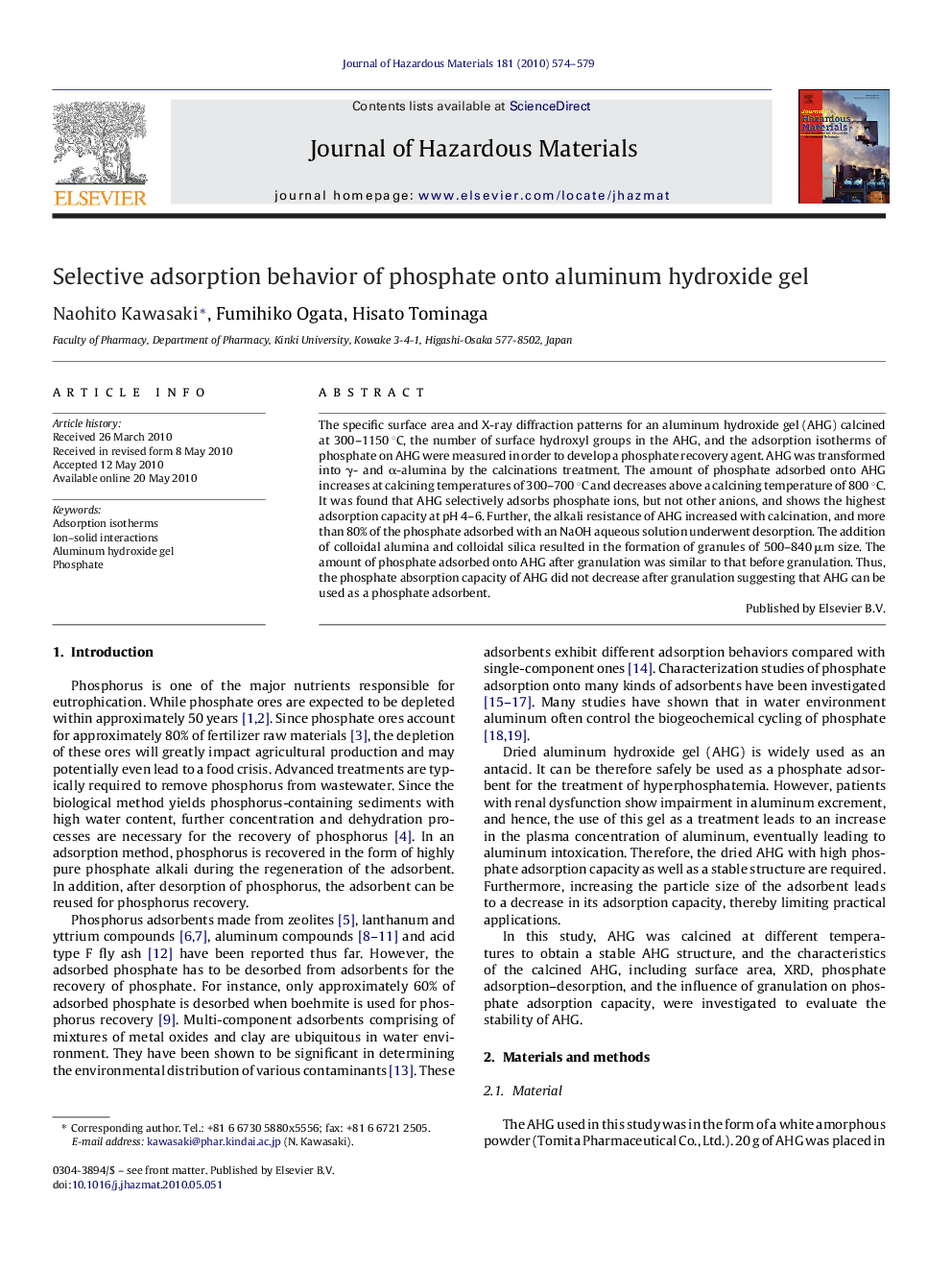| Article ID | Journal | Published Year | Pages | File Type |
|---|---|---|---|---|
| 580001 | Journal of Hazardous Materials | 2010 | 6 Pages |
Abstract
The specific surface area and X-ray diffraction patterns for an aluminum hydroxide gel (AHG) calcined at 300-1150 °C, the number of surface hydroxyl groups in the AHG, and the adsorption isotherms of phosphate on AHG were measured in order to develop a phosphate recovery agent. AHG was transformed into γ- and α-alumina by the calcinations treatment. The amount of phosphate adsorbed onto AHG increases at calcining temperatures of 300-700 °C and decreases above a calcining temperature of 800 °C. It was found that AHG selectively adsorbs phosphate ions, but not other anions, and shows the highest adsorption capacity at pH 4-6. Further, the alkali resistance of AHG increased with calcination, and more than 80% of the phosphate adsorbed with an NaOH aqueous solution underwent desorption. The addition of colloidal alumina and colloidal silica resulted in the formation of granules of 500-840 μm size. The amount of phosphate adsorbed onto AHG after granulation was similar to that before granulation. Thus, the phosphate absorption capacity of AHG did not decrease after granulation suggesting that AHG can be used as a phosphate adsorbent.
Related Topics
Physical Sciences and Engineering
Chemical Engineering
Chemical Health and Safety
Authors
Naohito Kawasaki, Fumihiko Ogata, Hisato Tominaga,
